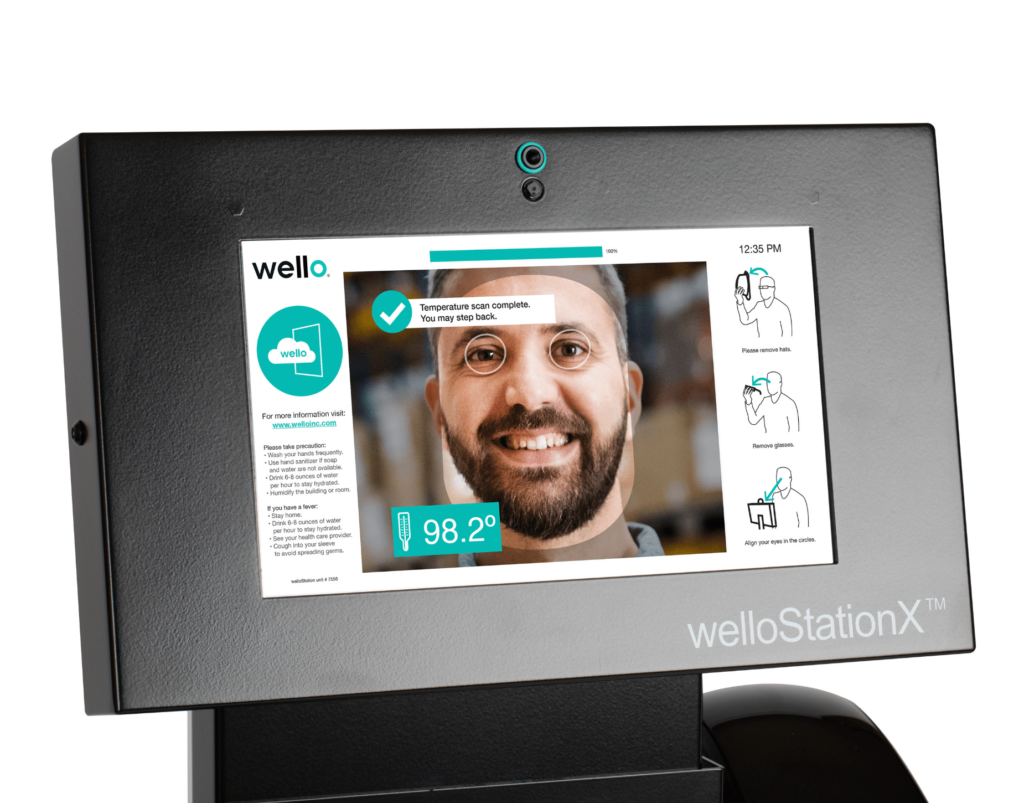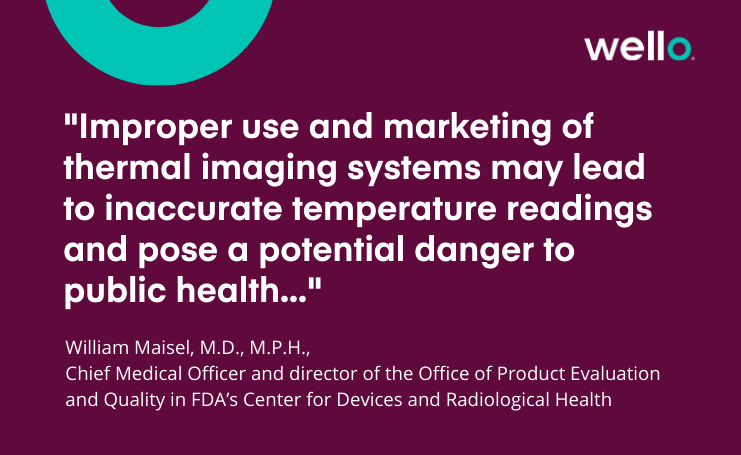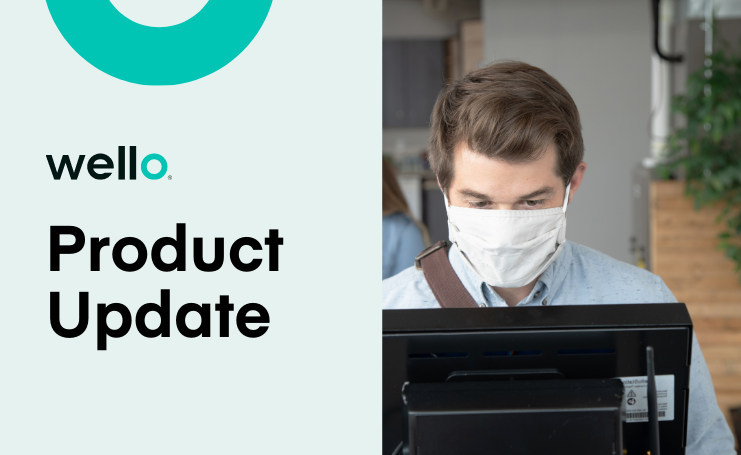Last week, the US Food & Drug Administration (FDA) began sending warning letters to certain firms offering unapproved, uncleared, and unauthorized thermal imaging systems for sale as elevated body temperature scanners. The FDA re-iterates what Wello tells our customers all the time: “While thermal imaging is not an effective diagnostic device for COVID-19, it can determine if someone has an elevated temperature, which can be an important risk management tool during the pandemic when used properly.”
Temperature monitoring is one of the most effective and efficient risk management practices for businesses who need or want to work in person.
Founded in 2014 and born from our founder’s experience fighting Ebola, Wello is on a mission to end the spread of contagious illness and set a new standard in employee health and safety. While other products have been retrofitted to address the pandemic, Wello’s products were created to protect the health and safety of employees long before COVID-19 and we’ll continue doing this work long after.
Some key differences between the welloStationX and other devices:
Clinically-verified Accuracy
In order to test the accuracy of our temperature-taking technology, Wello does not rely solely on laboratory-based instrument accuracy tests. Instead, we’ve run clinical studies including both well and sick people to determine our thermometer’s accuracy at capturing elevated temperatures in humans.
Biomedical Sensor
Our biomedical sensor relies on fundamentally different temperature-taking technology than thermal cameras. Early on in Wello’s research and development process, we identified thermal imaging technology as insufficient to accurately measure human body temperature and obtain FDA clearance as a Class II medical device. Thermal imaging cameras measure relative temperature in a broad area, usually compared to a blackbody radiator device. Wello, instead, uses a sensor that measures absolute temperature in a specific area of the body.
Strict alignment requirements
The welloStationX measures temperature in a very specific location, known as the inner-canthus region. This allows for more consistency in measuring skin temperature, without the impact of changing weather conditions.

Strict tolerance for distance from the sensor
The welloStationX detects how far a person stands from the station and will not complete a temperature scan unless they’re standing within the correct range to guarantee specified accuracy.
An experienced customer success team that helps your team ensure compliance and accuracy
- Setup: While our devices are plug-and-play, the welloStationX must be placed within a proper operating environment, just like all other temperature measurement systems. This includes factors like operating temperatures, lighting, and avoiding bottlenecks.
- Compliance: Our customer success team has designed a compliance program that customers can use to regularly confirm users are not wearing glasses or hats that could interfere with temperature measurements.
Wello’s Unauthorized Device Replacement Program
Echoing the FDA’s warning letters, we think unauthorized (unapproved or uncleared) and potentially inaccurate temperature-taking devices are dangerous and can do more harm than good. Scariest of all, some devices have been shown to actually “normalize” human temperatures–meaning they detect elevated temperature as “out of range” and “calibrate” them to the human average. They are designed to avoid false positives (extra alerts) but can give way to false negatives (allowing potentially contagious individuals to enter the facility).
We encourage you to de-commission unauthorized devices and introduce other measures for infection control and risk management. When used correctly, FDA-cleared devices, like the welloStationX, can be used as a way to detect temperature as part of a larger approach to COVID-19 risk management.
Learn more about Wello’s unauthorized device replacement program.


